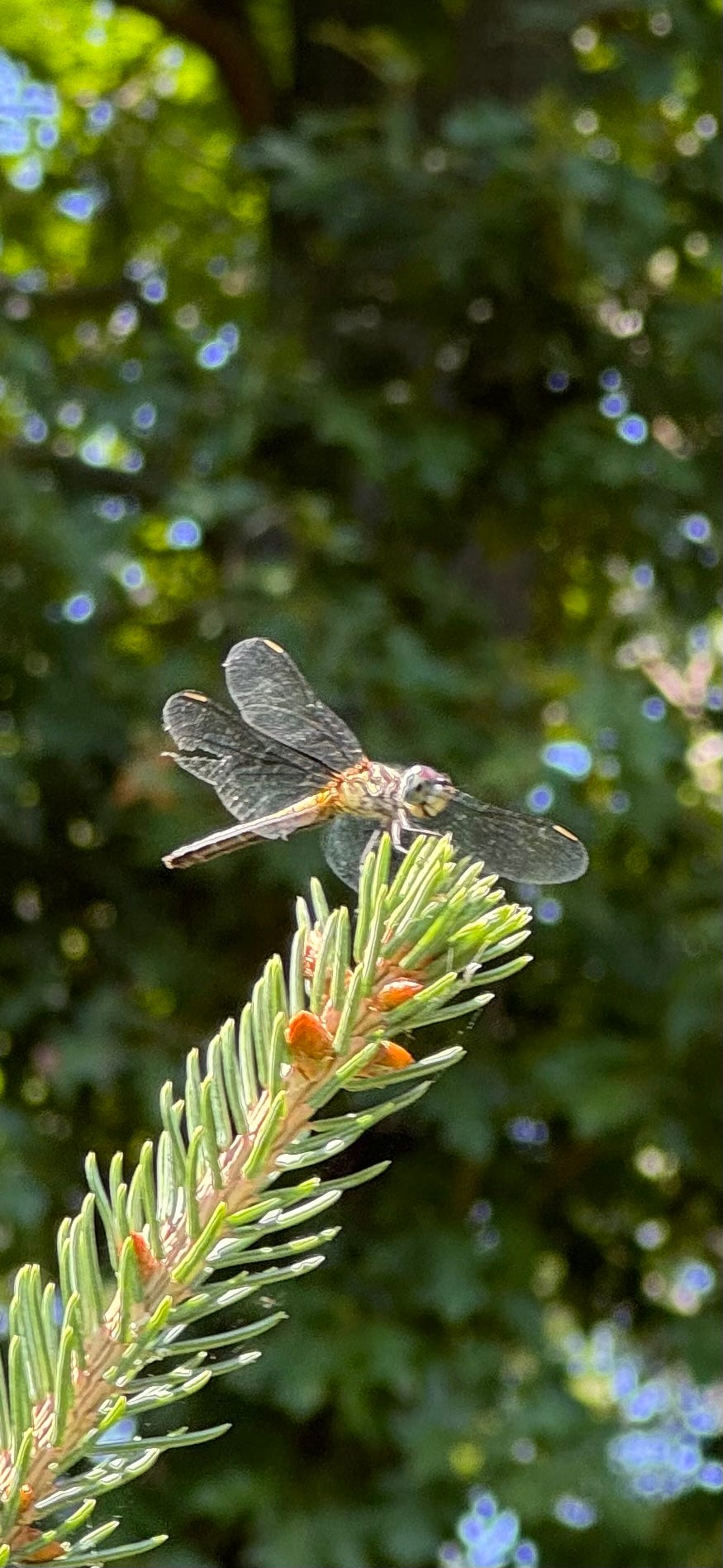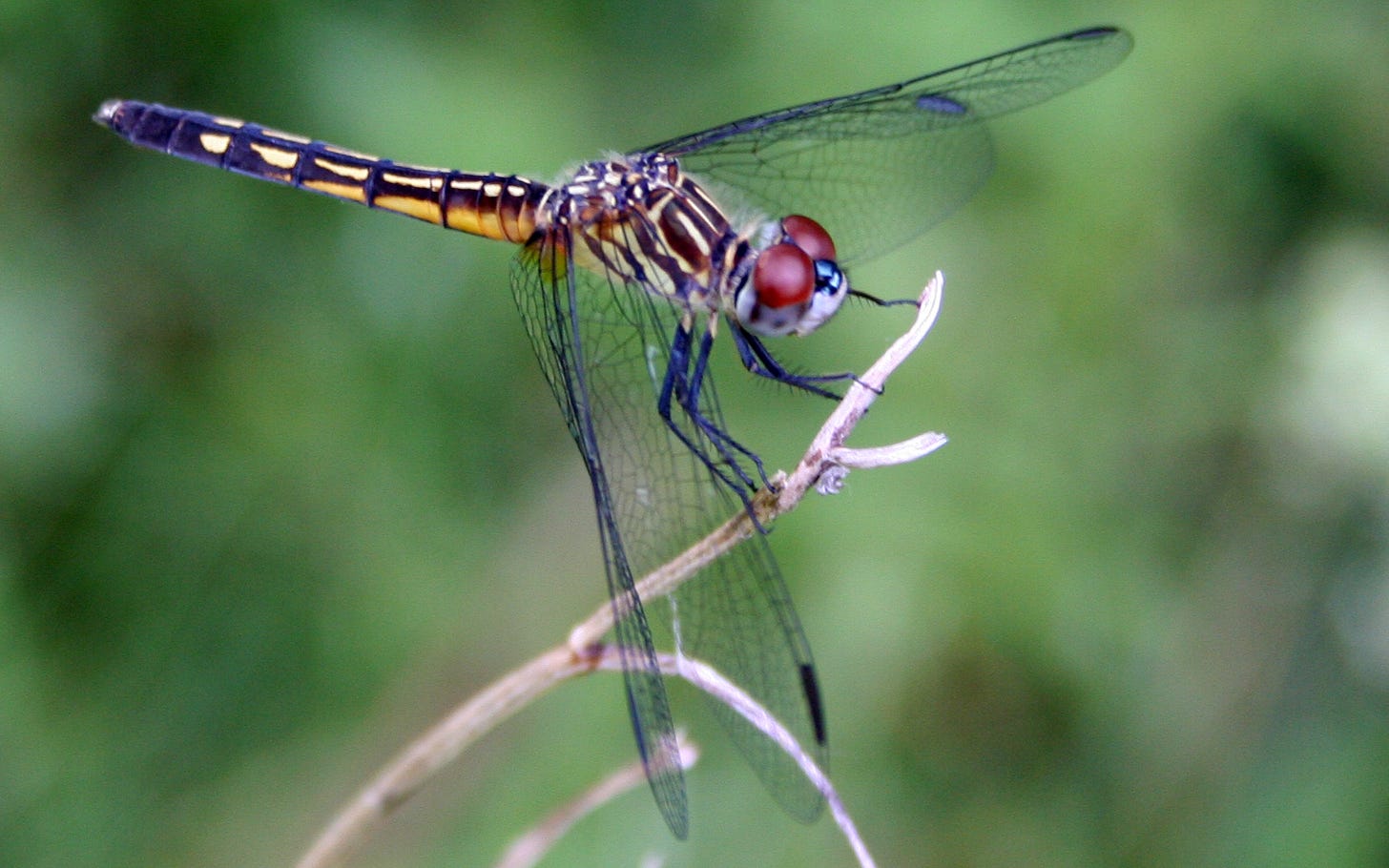The dragonfly rested on the branch tip of the spruce tree, quickly darted up, grabbed a small bug (I hope it was a mosquito!) then returned to its appointed lookout post.
I thought it nice to have a dragon protecting my backyard from those pesky biters. We’ve had regular rains this summer, keeping everything green and no doubt providing lots of opportunities for mosquitos and their enemies, the dragonflies.
This particular dragon was doing a good job patrolling the backyard. So I thought perhaps I should honor her by at least figuring out her name.
She is a Blue Dasher! Yes I know she’s not very blue. The male gets the credit for the name. NOT FAIR!
She’s pretty battle worn. Perhaps that wing tear came from a near escape from the purple martins. The martins love these big bugs. But I’m glad this one got away.
Some think that the males are prettier:
A male Blue Dasher. Credit Lea Maimone, WikiCommons
The latin name for the Blue Dasher is Pachydiplax longipennis. “Longipennis” doesn’t mean what you think! Pennis is Latin for “wings!” So the translation of the name is “Longwinged Dragonfly.” No sex discrimination there! But their wings aren’t really that much longer than other species. It’s an optical illusion.
Female Blue Dasher. Credit CreativeCommons.
The female’s body is a bit shorter, making the wings look longer and perhaps explaining the name, longipennis. So if anything, in Latin the woman gets credit for the name.
These blue dashers are voracious feeders, eating any bugs on the wing. Flies, mosquitos, moths, you name it. They eat up to 10% of their body weight each day! Imagine if we ate like that! That’s a lot of mosquitos! In their nymph form they eat other aquatic larvae, smallfish and tadpoles.
Keep an eye out for Blue Dashers this week!









Point of contention: the female does NOT have to take the name of the male, she Chooses to 😎
I think the reason the male is more decorative is that the female choses her mate so the male has to up his game in order to be chosen as a mating partner. Taken from “ The evolution of Beauty”by Richard Prum